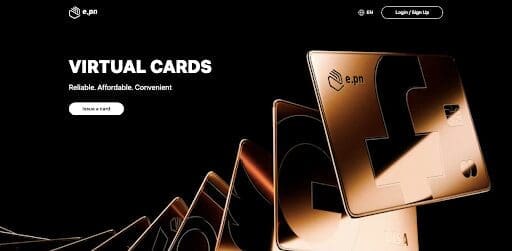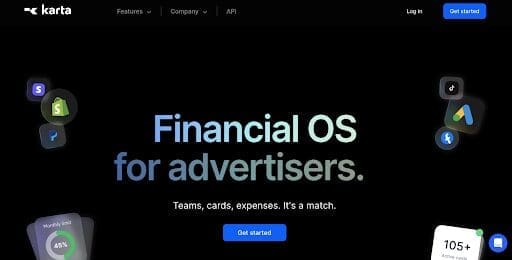Businesses and consumers alike are increasingly adopting virtual cards due to their convenience, enhanced security features, and seamless integration with digital payment systems. Behind this trend are specific reasons: the rise in dollar expenditures, the shift to digital services, and the demand for transparent cost control. In 2025, virtual dollar cards have ceased to be a niche solution. They are now used for purchasing traffic, SaaS subscriptions, international transfers, and managing team budgets.
Banking infrastructure does not provide the necessary flexibility. Users face blockages, hidden fees, and restrictions on foreign payments. As a result, companies are turning to fintech services that issue virtual cards focused on automation and independence from national regulators.
Three services that meet these requirements in 2025 are Spend.net, EPN, and Karta.io. These services use a similar architectural model: the card is issued in partnership with international banks and operates on the Visa or Mastercard network. This ensures compatibility with global platforms and transaction stability.
-
Spend.net
The Spend.net platform offers innovative solutions for users seeking a convenient and secure way to work with virtual dollar cards. It specializes in issuing cards for various purposes, from media buying on popular advertising platforms to online shopping. The main advantage of the service is the free cards that are available without any hidden fees.
Spend.net offers two types of cards: one for advertising payments and the other for universal online payments. The media buying cards automatically offer 2% cashback on all advertising expenses, making them a cost-effective tool for ad campaigns. The shopping cards offer 1% cashback, which is also a convenient benefit for users who frequently make online purchases.
Top-up via the Spend.net platform incurs a fee depending on the user’s chosen percentage. The average fee is 2%, but no fees are charged for other financial operations, including transactions, declines, exchange operations, and withdrawals. Importantly, the top-up fee only applies to amounts under $50.
Benefits of Spend.net:
- Free cards for media buying and all online payments
- Cashback on all types of expenses
- Attractive commission system
- 3D Secure security
- Cryptocurrency top-ups
- Convenient team management features for budget management
- Fast registration and 24/7 support
2. EPN
EPN is a platform created to provide convenient and secure solutions for media buyers and marketers. The service offers virtual cards for working with international advertising campaigns, particularly for paying for traffic on popular platforms. EPN’s primary goal is to help users manage advertising expenses effectively while ensuring transaction security and high control.
EPN issues Visa and Mastercard virtual cards issued by U.S. banks. This ensures high compatibility with most international payment systems. Although the cards are ideal for paying for international traffic, the service recommends not linking them directly to ad accounts to avoid potential restrictions from advertising platforms.

Benefits:
- Cards from trusted U.S. banks
- 3D Secure technology
- Cryptocurrency top-ups
- Bank transfer support
- Teamwork tools
- Fast registration and accessible support
3. Karta.io
Karta.io is a platform aimed at arbitrage teams and businesses, primarily targeting users from the U.S. The service offers virtual dollar cards for advertising campaigns, but for businesses not registered in the U.S., the terms may be less favorable, including in terms of fees. To access better conditions, businesses must provide Karta.io with registration documents.
For users without business registration in the U.S., there are restrictions on the number of cards. A maximum of 200 cards can be issued per month, with only 20 being active at the same time. These limits are important for those planning to use the cards extensively for advertising campaigns.

Benefits:
- User-friendly interface for card management and analytics
- Attractive conditions for U.S.-registered businesses
- Cryptocurrency top-ups
- 3D Secure security
- Fast registration and verification
- Quick customer support via chat and email
Key trends of 2025: automation, security, and control
In 2025, virtual dollar cards are becoming not just a technical solution but an integral part of a business’s financial strategy. They allow for the automation of routine processes, risk reduction, and increased transparency of all expenses.
- Automation: Card issuance and management via API, integration with accounting systems, and expense category limits eliminate manual labor for teams.
- Security: Each card is created for a specific purpose and can be deactivated with a single click, reducing fraud risk and simplifying control.
- Financial manageability: Refined analytics, budget allocation by department and project, and balance control simplify financial management in scalable structures.
The market is gradually shifting from banking infrastructure to independent fintech platforms. Virtual cards, especially in dollars, are becoming the standard for B2B payments, working with SaaS, paying for advertising, and other sectors with high transaction volumes and flexibility requirements.
According to a report by Globe Newswire, digital technologies from AI to remote education transformed key sectors as early as 2023. Since then, they have reached nearly half of the population in developing countries, providing wider access to commerce and basic infrastructure. These processes are making technological solutions, including virtual cards, part of a global shift from isolated systems to a more inclusive and operational model of interaction.
The growth of digitalization in developing economies is accelerating the spread of virtual cards. Their adoption now runs parallel to broader changes: digital identification, access to online banking, and connection to e-commerce platforms. All of this creates the foundation for sustained demand for flexible payment tools.
Conclusion
Fintech platforms offering virtual dollar cards address not only operational tasks but also global challenges: how to ensure transparent and secure transactions in the growing digital economy. Their spread is independent of banking licenses in specific jurisdictions—it follows the demand for speed, scalability, and manageability. This is why the virtual card market will continue to grow—not as an alternative but as a logical continuation of digital transformation.

Crédito: Link de origem


